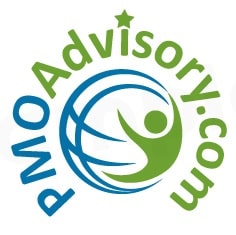(Technique): What are best practices for PMOs in balancing new product development with in-market product lifecycle maintenance?
Synthesized by ChatGPT then edited and enhanced by Te Wu.
Specific contributors include:
-
- Cristina Niculescu
- David Vincenti
- Todd Generotzke
- Anonymous
Managing the tension between sustaining current operations and driving future growth is a perennial challenge for organizations. At the heart of this dilemma lies the distinction between in-market product maintenance and new product development (NPD)—two fundamentally different activities that serve divergent business objectives. In-market maintenance is closely tied to current-year performance, emphasizing metrics such as uptime, supply chain reliability, gross margin, and short-term revenue growth. In contrast, NPD is inherently forward-looking, focused on unlocking future revenue streams and long-term competitiveness.
Given these differences, organizations should manage these streams with distinct governance structures and incentive models. Maintenance portfolios benefit from oversight by a PMO or executive body whose performance is evaluated against operational KPIs. This ensures accountability and responsiveness to real-time market demands. Conversely, NPD initiatives should be managed by teams oriented around future strategic growth, with rewards aligned to innovation milestones and market impact projections.
Companies may choose to ringfence resources or adopt a more fluid allocation model, depending on product volatility, market dynamics, and organizational maturity. Regardless of approach, successful firms implement clearly defined investment ratios between sustaining and growth initiatives as part of their portfolio management strategy—ensuring capital efficiency while preserving agility.
A robust innovation pipeline also requires structured support from various channels including R&D, which plays a critical role in shaping the innovation roadmap, validating feasibility, and enabling scalable execution. The adoption of lean innovation frameworks and the use of cross-functional teams can further catalyze progress, allowing organizations to remain agile in identifying opportunities for automation, AI integration, and continuous product evolution.
Ultimately, funding for innovation must be treated differently from sustaining capital. The return on investment (ROI) expectations, risk profiles, and strategic contributions vary greatly, necessitating differentiated evaluation criteria and performance measurement systems. The companies that master this balancing act—ensuring the health of today’s products while investing wisely in tomorrow’s breakthroughs—are those best positioned for enduring success.
Contribution by: Cédric Kahl
Balancing new product development with in-market product lifecycle maintenance is often guided by the organization’s investment strategy, where target investment ratios are defined to support innovation, new product development and launches, and sustaining activities for marketed products.
A best practice in portfolio management is to actively manage this balance by aligning portfolio decisions with these predefined ratios, while also remaining flexible to adjust based on evolving business priorities or product performance.
Contribution by: Cristina Niculescu
Balancing new product development with lifecycle maintenance requires a strategic approach at company level. An R&D team can play an important role in defining the innovation roadmap, assessing feasibility, and supporting execution. Additionally, implementing lean innovation frameworks and cross-functional focus groups ensures that teams remain proactive in identifying automation opportunities, AI integration, and continuous product evolution
Contribution by: David Vincenti
In-market maintenance has current-year sales as its objective; NPD has future sales. Therefore, they should be managed in different ways by people whose individual rewards are aligned with those objectives. A portfolio of in-market maintenance projects should have a PMO or executive review function that is rewarded on current-year metrics (supply metrics, up-time metrics, new customers/accounts, gross profit, sales $, etc.). Resources can be delegated from the NPD PMO and adjusted periodically or assigned and ringfenced in the annual budget; this depends on industry, company, and product volatility.
Contribution by: Anonymous
Innovation/Growth funding should be different from sustaining capital. ROI expectations and strategic contribution would be different for both.
